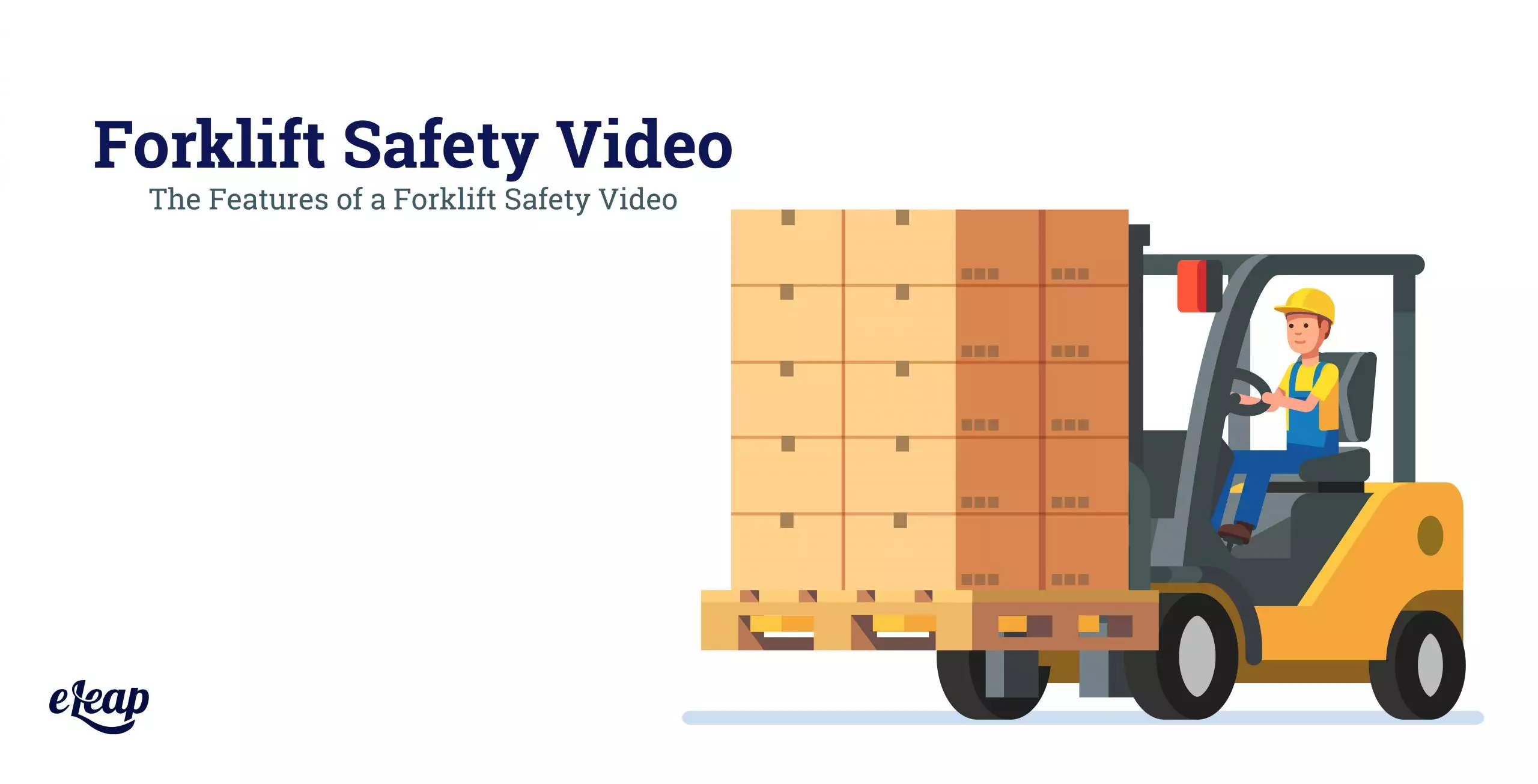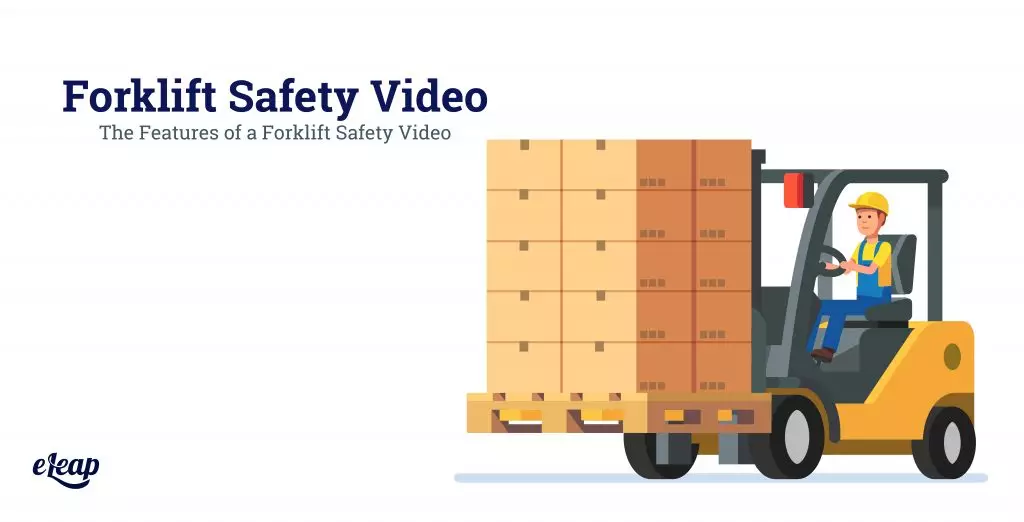Forklift Safety Video
The Features of a Forklift Safety Video

Introducing a forklift safety video into your training program is the first step towards creating a safer working environment. There are OSHA regulations to consider, as well as those issued by the American National Standards Institute that employees must follow to reduce injury in the workplace. What can one forklift safety video do to create a safer working environment?
The truth is that a single forklift safety video can do a great deal to help create a safer workplace. It’s not just about the forklift operator, either. Anyone who might come into contact with the forklift or be in the area while it is in operation should also complete a safety course. Below, we’ll explore several of the key ways that the right training video can make a difference in your workplace.
Critical Features of a Forklift Safety Video
There are five primary areas where forklift safety videos can help improve how your workplace operates and reduce the risk to forklift operators, warehouse workers, and other staff who might be in the area while operators are using the machinery.
Regulations
A forklift safety video often begins by explaining the regulations of using a forklift. There are OSHA protocols and regulations from the ANSI that promote safe working habits regarding heavy machinery. It is crucial to discuss regulations that employees must follow to avoid legal issues and to prevent any damage done if procedures are not followed. Videos do this in a way that is succinct and easy to understand.
It might also be a good idea to create a quiz over forklift safety and operation regulations within your LMS. Have the learners take the quiz after completing the video (or the regulations module alone if that works better) and assess whether they retained the information sufficiently or if they need to watch the video again. Quizzes provide simple, expedient ways to assess knowledge retention while also engaging your learners.
Risks
Forklift safety videos often review the risks that come from not following the regulations discussed previously. The video will review the risk of injury and death and how to properly minimize these hazards to protect all workers. It is important for everyone in the company—not just the operators of the machine—to know about the risks of using a forklift incorrectly and to be aware of their surroundings.
Including questions about the risks inherent with operating a forklift in the quiz or a separate quiz can help to drive home the importance of this topic. Instead of multiple-choice format, consider using descriptive scenarios that highlight situations involving forklift use and potential risks, then allow your employees to choose the solution that would mitigate the risk in each situation.

Terminology
Videos are a great way to learn proper forklift terminology, like rated capacity, stability triangle, and combined center of gravity. If those terms mean nothing to you, you will know a lot more after watching a forklift safety video. Getting familiar with terminology does more than just expand a learner’s vocabulary, though.
It builds their knowledge of important concepts. For instance, rated capacity is more than just a specific weight – it’s the point at which operating a forklift becomes inherently more dangerous. By familiarizing themselves with these terms, employees become more cognizant of the various risks involved with the equipment.
Techniques
Along with preventative measures and terminology, forklift safety videos can demonstrate the best techniques to be productive. There are four major operation rules to train on: inspection, stability, safe operation, and loading trucks and trailers. Comprehensive training in each of these areas enables a forklift operator to better understand how to use the machinery efficiently and effectively.
One of the major causes of forklift injuries is the mentality of productivity rates. As people are often reviewed based on their productivity, workers want to complete as much work as they can. However, this speed can be reckless and dangerous and cause damage to employees and products. Thus, a forklift safety video can help teach processes that balance the need for productivity with simple techniques and safety measures.
With that being said, it’s also important that management understands how the pressure to be more productive can lead to greater safety risks to employees. Often, management puts pressure on forklift operators to be more efficient and productive, without considering how that pressure might translate into risk in the workplace. Because of this, you should require anyone managing forklift operators to complete forklift safety video training.
Engagement
Although you can teach the above four features through other learning methods, a forklift safety video is the best option as it encourages interaction and engagement. Consider this – 90% of the information processed by the brain is visual, and people tend to retain visuals and stories more than anything. Thus, a humorous, well-put-together forklift safety video not only relays the information but keeps the employee engaged.
When you engage your employees, they retain more of the information you’re communicating. If they retain more, they utilize the safety processes and productivity skills towards creating a better working environment. They’re better able to apply the skills they learned in the video to their regular work responsibilities.
Beyond Training: Creating a Safer Workplace
Training forklift operators and other employees on the rules, regulations, and risks that come with the machinery can help minimize safety hazards and injuries. Teaching terminology and techniques can keep your workers productive while still staying safe. All of this is best done through an engaging and interactive forklift safety video that will keep your business injury- and damage-free.
However, don’t forget the importance of following up those videos with assessments to ensure knowledge retention and understanding. Quizzes provide a direct way to measure knowledge retention. Also, performance assessments can help (and are required every three years for forklift operator recertification).
Forklift Safety Courses:
- Forklift Safety Lessons For The Safe Pedestrian
- Forklift Operator Safety: Handle with Care
- Workplace Safety Training Courses
